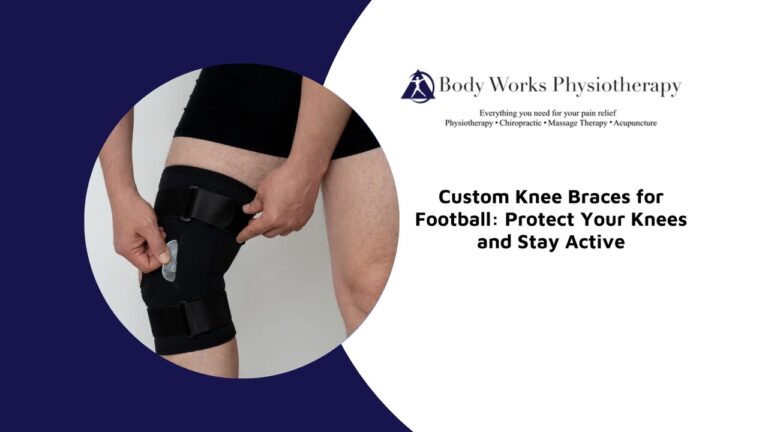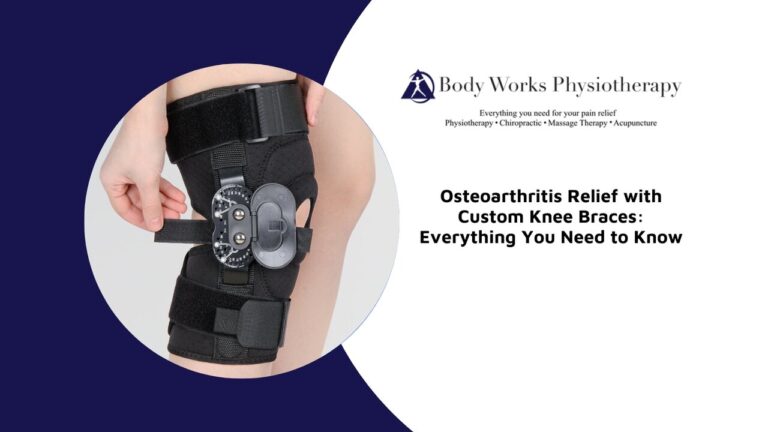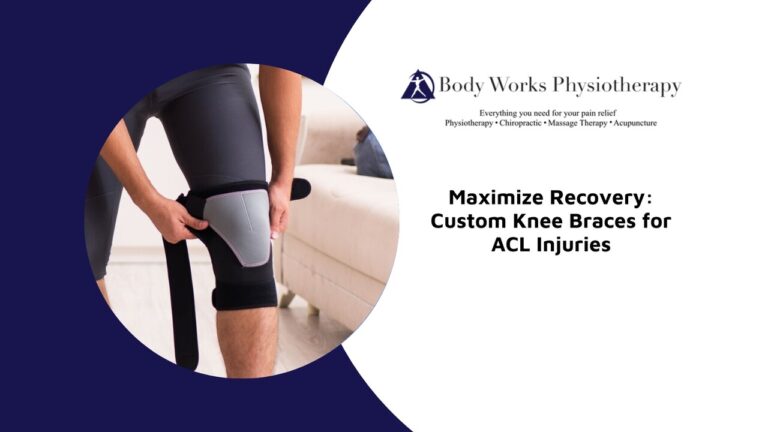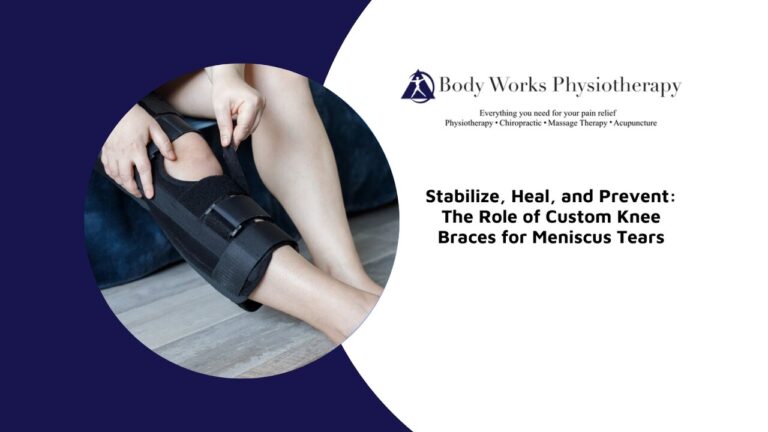
Whether you’re a seasoned pro or an enthusiastic amateur, tennis can be a physically demanding sport that puts significant strain on your joints and muscles. To keep you playing at your best, it’s crucial to protect yourself from common injuries. This blog post explores the essential role of braces for injury prevention when playing tennis.
Benefits of Bracing for Athletes
Bracing offers numerous advantages for athletes by providing support, stability, and injury prevention. For tennis players, braces help maintain proper alignment of the joints, reducing the risk of sudden twists or turns that could lead to injury. This enhanced stability is crucial for preventing common tennis injuries and ensuring that players can move confidently on the court.
Additionally, braces can alleviate pain by reducing the strain on muscles, tendons, and ligaments. This pain relief allows tennis players to continue playing with reduced discomfort, enhancing their overall performance and enjoyment of the game. By minimizing pain, braces enable athletes to focus more on their technique and less on their physical limitations.
For players recovering from an injury, braces provide the necessary support to protect the injured area and promote faster healing. The added support helps prevent further damage, allowing the body to heal more effectively. This can lead to a quicker return to the court and a lower risk of re-injury.
Best Braces for Tennis Players
Tennis players commonly use various braces to help protect against injuries and provide support during intense matches and practice sessions. The most frequently used braces include:
- Ankle Braces: Ankle braces are designed to stabilize the ankle and prevent sprains by providing compression and support to the ligaments and tendons. These braces are essential for tennis players prone to ankle sprains, as they help protect the ankle from sudden twists and turns that can lead to ligament injuries.
- Wrist Braces: Wrist braces are used to prevent wrist sprains and support the wrist joint during powerful strokes. They provide compression and stability, reducing the risk of overextension or injury to the tendons and ligaments in the wrist.
- Elbow Braces: Elbow braces, commonly known as tennis elbow braces, help alleviate the pain and inflammation associated with tennis elbow. These braces apply pressure to the forearm muscles, reducing strain on the elbow tendons and improving overall arm stability. The compression stabilizes the muscles around the elbow, minimizing pain and preventing further injury.
Tips for Adjusting Braces for Maximum Effectiveness
To maximize the effectiveness of braces, tennis players should follow specific guidelines to ensure a proper fit, adjustment, and positioning.
For ankle braces, it’s important to ensure the brace fits snugly but comfortably around the ankle. The straps or laces should be adjusted to provide optimal support without restricting blood flow, ensuring the brace covers the ankle joint correctly to provide maximum stability.
When it comes to wrist braces, selecting a brace that fits comfortably around the wrist without being too tight is crucial. Proper positioning of the wrist brace is essential to cover the wrist joint, helping to support the wrist during powerful strokes and reducing the risk of overextension.
For elbow braces, choosing one that fits snugly around the forearm without being too tight is key. The straps should be adjusted to apply even pressure to the forearm muscles, ensuring effective support. Positioning the elbow brace approximately 2-3 inches below the elbow joint helps target the tendons effectively, reducing strain and providing stability during play.
Properly fitted and adjusted braces not only help prevent injuries but also enhance overall performance by providing the required support to the joints and muscles. Professionals often recommend that athletes and highly active individuals invest in custom braces that offer a more bespoke fit compared to off-the-shelf options.
Custom Braces vs. Off-the-Shelf Braces
When it comes to choosing the right brace, tennis players often face the decision between custom braces and off-the-shelf options. Here are the benefits of custom braces over off-the-shelf options:
- Perfect Fit: Custom braces are designed to match the exact contours of your body, ensuring a snug and comfortable fit. This precise fit provides better support and stability compared to generic, mass-produced braces.
- Personalized Support: Custom braces address specific issues and requirements unique to the individual. Whether you need extra support for a previous injury or have particular anatomical considerations, custom braces offer tailored solutions.
- Enhanced Comfort: With custom braces, there is less risk of discomfort, chafing, or slipping during use. The tailored fit ensures that the brace stays in place and functions effectively, allowing for greater comfort during physical activities.
- Improved Performance: Custom braces provide optimal support without restricting movement, helping athletes maintain their performance levels. The precise design aids in better joint alignment and muscle support, leading to improved athletic performance.
- Durability: Custom braces are typically made from higher-quality materials, offering greater durability and a longer lifespan than off-the-shelf options. This investment in quality ensures sustained support and protection over time.
Can Wearing a Brace Improve Performance or Technique?
While the primary function of braces is injury prevention, they can also indirectly improve performance and technique for tennis players. By stabilizing joints and providing support, braces allow players to perform strokes with more confidence and reduced pain, potentially leading to better performance. This increased stability can help players maintain proper form and posture during intense matches, reducing the likelihood of making errors due to discomfort or instability.
Additionally, braces can provide psychological benefits by boosting a player’s confidence. Knowing that their joints are supported, athletes may feel more secure in their movements and more willing to push their limits on the court. This mental assurance can translate into more aggressive and precise play, enhancing overall performance.
Braces can also assist in the recovery process for players returning from injury, allowing them to gradually rebuild strength and technique without the risk of aggravating their condition. This support can enable players to engage in more rigorous training sessions, helping to improve their skills and conditioning over time.
However, it is essential to note that braces are not a substitute for proper technique and conditioning. Players should continue to focus on training their muscles and perfecting their form to ensure long-term success and prevent dependence on braces. Combining the use of braces with a comprehensive training regimen that includes strength training, flexibility exercises, and proper warm-up routines will provide the best results for performance and injury prevention.
Potential Drawbacks of Wearing Braces
Despite their benefits, there are some potential drawbacks and limitations to wearing braces while playing tennis:
- Restricted Movement: Braces can sometimes restrict movement, which may affect a player’s agility and range of motion. For example, ankle braces might inhibit quick lateral movements, while wrist braces could impact the wrist’s flexibility during powerful serves.
- Dependence: Over-reliance on braces can lead to weakened muscles and ligaments, as they may not get the necessary conditioning. When players consistently use braces, their muscles might become accustomed to the external support, potentially leading to decreased strength and stability when the braces are not worn.
- Discomfort: Poorly fitted or improperly adjusted braces can cause discomfort or chafing during play. Braces that are too tight can restrict blood flow and cause numbness, while those that are too loose may not provide adequate support, increasing the risk of injury.
- Skin Irritation: Extended use of braces can lead to skin irritation or rashes. Sweat accumulation under the brace can cause friction and bacterial growth, leading to uncomfortable skin conditions. Regularly cleaning the brace and ensuring proper hygiene can help mitigate this issue.
In conclusion, while braces offer significant benefits for injury prevention and support, it is crucial for athletes to be aware of their limitations. Ensuring a proper fit, using braces appropriately, and maintaining a balanced training regimen can help mitigate these drawbacks.
Unleash Your Potential
Braces are valuable tools for tennis players to help protect against injuries and provide support. By choosing the right brace and wearing it correctly, players can prevent common injuries such as tennis elbow, wrist sprains, and ankle sprains, ultimately enhancing their performance and enjoyment of the game.At Body Works Physiotherapy in Scarborough, we specialize in providing custom-made and custom-fitted braces tailored to your specific needs. Don’t let pain or the fear of injury hold you back from enjoying your game. Book your appointment with us today, and let’s work together to ensure you stay healthy, active, and at the top of your game.




